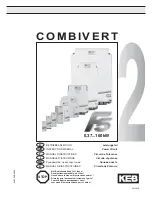
13
60706-238/H
STARTING HINTS
COLD WEATHER
A. Use the proper oil for the temperature expected.
B. Use fresh winter grade fuel. Winter grade gasoline is
blended to improve starting. Do not use summer grade
gasoline.
HOT WEATHER
A. Use the proper oil for the temperature expected.
B. Use only summer blended gasoline. Using gasoline left
over from winter may cause the unit to vapor lock.
STOPPING AND STORING
1. Move the key to the “OFF” position.
2. Turn off the fuel supply valve.
3. Before extended storage (over 30 days) certain
precautions must be taken to ensure the fuel doesn’t
deteriorate and clog the fuel system.
NOTE:
The use of a fuel additive, such as Sta-Bil or
equivalent will minimize the formation of gum deposits
during storage. The additive may be added to gasoline in
the engines fuel tank or to gasoline in a storage container.
A. Add the fuel stabilizer to the fuel in the tank and run
for 2 minutes to circulate the stabilizer throughout the
fuel
system.
B. If you choose to remove the remaining fuel from the
fuel tank, it must be drained into an approved
container.
C. Start the engine and allow it to run until all the fuel in
the carburetor and the fuel lines has been used up and
the engine stops.
NOTE:
Running the engine to use up the fuel in the lines
and carburetor will still leave a small amount of fuel in
carburetor. It is best extended storage to treat the fuel
before draining.
D. While the engine is warm, drain the oil and refill with
fresh
oil.
E. Clean dirt and chaff from cylinder, cylinder head fins,
blower housing, screen, and muffler areas.
F. Store in a clean and dry area.
OPERATING SPEED
The engine-generator must be run at the correct speed
in order to produce the proper electrical voltage and
frequency.
CAUTION: EQUIPMENT DAMAGE
The output voltage should be checked to ensure the
generator is working properly prior to connecting a
load to the generator. Failure to do so could result in
damage to equipment plugged into the unit and possi-
ble injury to the individual.
All engines have a tendency to slow down when a load
is applied. When the electrical load is connected to the
generator, the engine is more heavily loaded, and as a
result, the speed drops slightly. This slight decrease in
speed, together with the voltage drop within the generator
itself, results in a slightly lower voltage when the generator
is loaded to its full capacity than when running no load.
The slight variation in speed also affects the frequency
of the output current. This frequency variation has no
appreciable effect in the operation of motors, lights, and
most appliances. However, electronic equipment and clocks
will be affected if correct RPM is not maintained. See Load
vs. Output chart.
Although individual units and models vary slightly, the
normal voltage and frequency of the engine-generator
described in this manual are approximately as follows,
under varying loads:
LOAD vs. OUTPUT
Generator
Load
Speed
(RPM)
Frequency
(Hz)
Voltage
None
3690
61.5
125V
Half
3600
60.0
120V
Full
3510
58.5
115V
The speed of the engine was carefully adjusted at the
factory so that the generator produces the proper voltage
and frequency. For normal usage, the speed setting should
not be charged. If the generator is being run continuously
on a very light load, it is often advisable to lower the
operating speed slightly.
CAUTION: EQUIPMENT DAMAGE
SPEED ADJUSTMENTS SHOULD ONLY BE MADE BY
A QUALIFIED SERVICE TECH. Whenever making any
speed adjustments, check the unit with a voltmeter
and a frequency meter or a tachometer and be sure
the voltage and speed are correct.
Lower voltage may damage both the generator and any
load connected to it. Running the engine at excessively
high speeds results in high voltage, which may significantly
shorten the life of appliances being used.
Output voltage should be checked periodically to ensure
continued proper operation of the generating plant
and appliances. If the generator is not equipped with a
voltmeter, it can be checked with a portable meter.






































